Howdy, Stranger!
It looks like you're new here. If you want to get involved, click one of these buttons!
Categories
- 997 All Categories
- 3 Picture Posting and Resizing
- 60 New Member Introductions
- 118 Off-Topic Forum
- 2 Photography
- 2 Resources
- 18 New Product Information
- 171 The SierraWest Forum
- 12 Brett's Blog
- 120 General News & Ramblings
- 3 Re-Release Information
- 6 Q & A about SierraWest
- 9 What Would You Like to See?
- 412 Builds
- 146 HO Scale Builds
- 183 O Scale Builds
- 62 Finished SW Build Pics
- 15 Miscellaneous Builds
- 194 Techniques
- 19 Working with Wood
- 23 Painting Castings
- 4 Masonry
- 23 Scenery
- 37 Tools and Supplies
- 22 Layout Planning & Building
- 40 Miscellaneous
- 21 Prototype Information
- 20 Reference and Research
Sequoyah Falls Timber Co.
Attached are several pictures of my Sequoyah Falls Timber Co. diorama that features the SWSM sawmill, logging and tractor repair shed, tool shed, and rigging shed, plus cook and bunk houses. The diorama is 4' x 6', and features a large waterfalls behind a trestle. There is no more room in the diorama for any more structures, except for a small water tank, etc.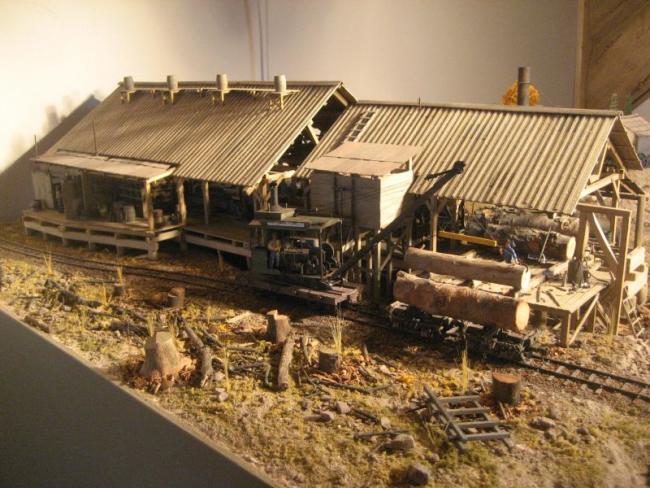
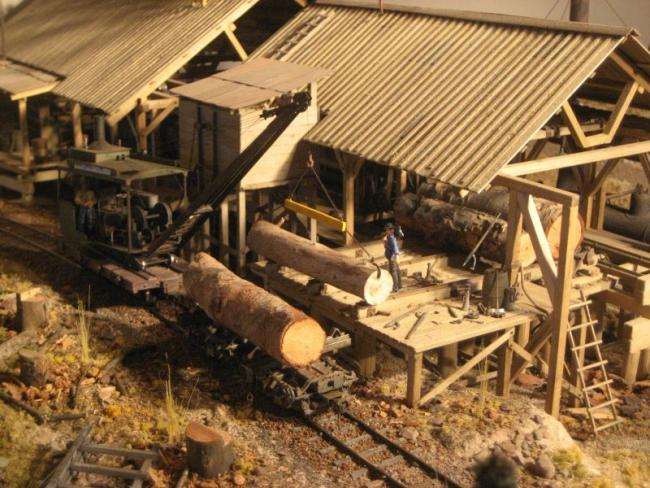
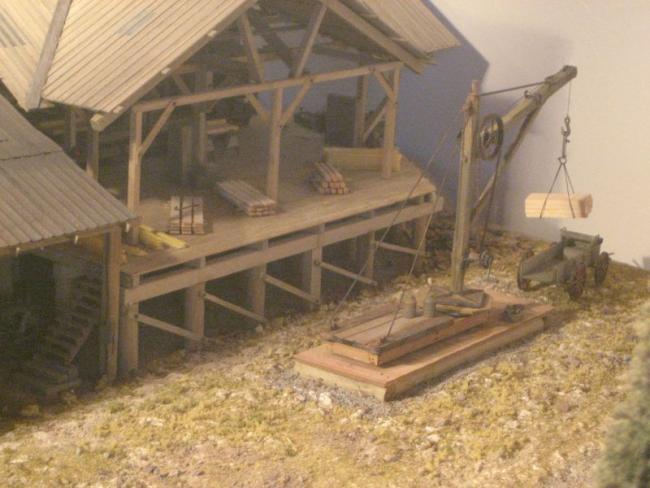
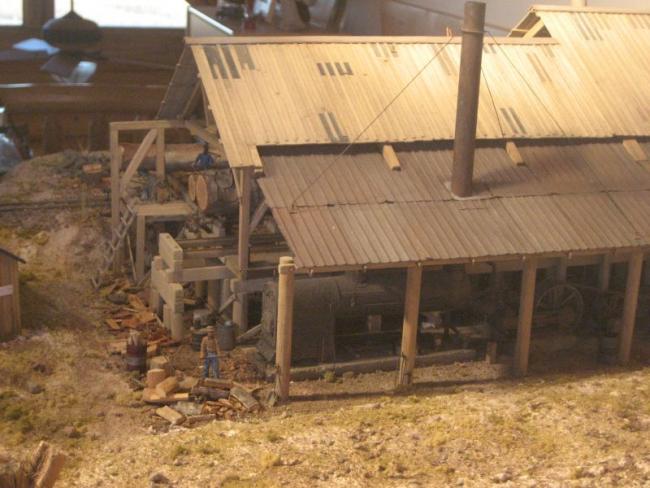
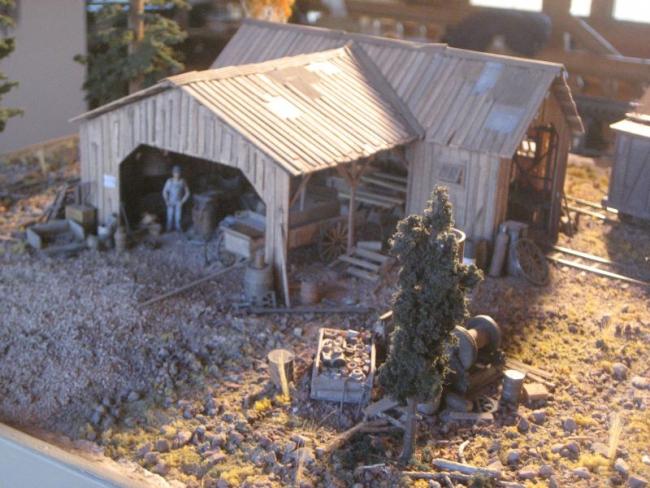
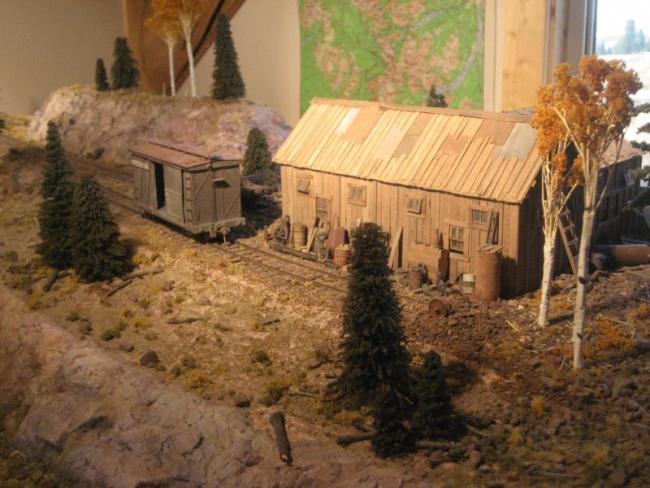
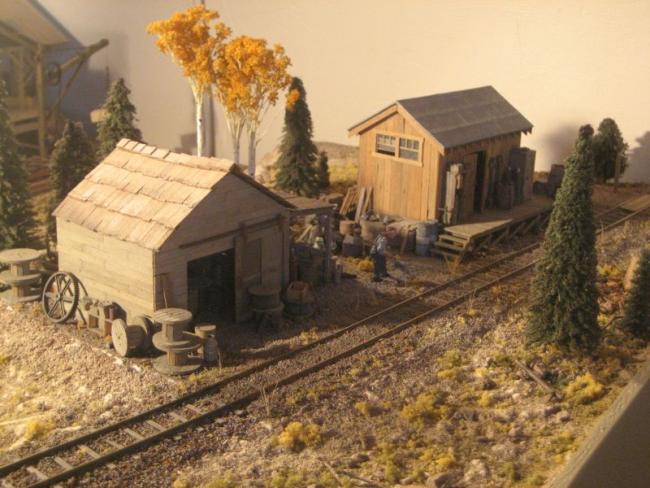
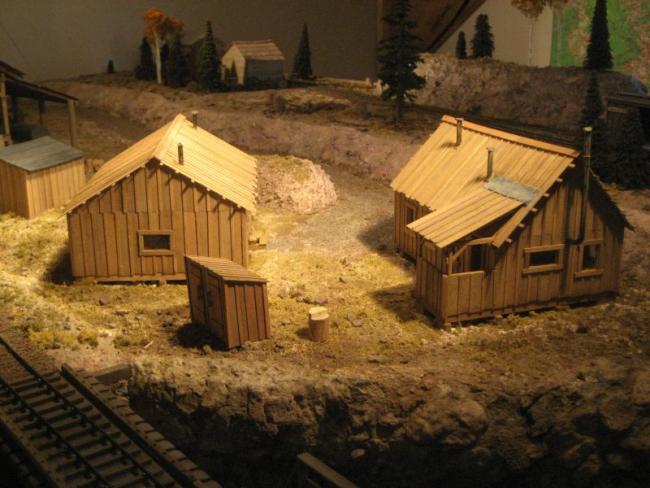










Comments
Carl
Thanks for sharing!
Alan
Carl
History of Sequoyah Falls Timber Co.
In early 1889, the same year Montana became a state, the Great Northern Railway (GNR) announced plans to build the Pacific Extension from Havre, Montana over Marias Pass (elevation 5,214 feet) to the Pacific Coast. Construction of the Pacific Extension created a large demand for manufactured wood products, including crossties (2,500 per mile), bridges, pilings, telegraph poles, snow fences, fuelwood for railroad camps, cribbing, tunnel timbers, fuel, corduroy roads, and railroad buildings. Most cross ties for the GNR line in northwest Montana were made of Douglas fir or western larch and either hewn in the woods adjacent to the rail line or manufactured by sawmills near the GNR line. In addition, the GNR used several million feet of dimension lumber to construct railroad bridges and tunnels. In the Summit and Bear Creek areas, over 100 wood buildings were constructed for the grading camps. Building the tote road paralleling the rail line required constructing 122 bridges and numerous corduroy roads.
In anticipation of GNR demand for wood products, the Sequoyah Falls Timber Co. (SFTC) was established in 1888. SFTC’s sawmill and supporting facilities were completed in 1889, just prior to construction of the GNR line over Marias Pass. The mill was located immediately south of Sequoyah Falls on Essex Creek about one-half mile west of Essex, Montana, a small town along the GNR line located about 16 miles south of Marias Pass and 58 miles west of Kalispell. Advantages of this location were its proximity to heavily-forested areas, the GNR line, and Flathead Valley.
Initially, the sawmill manufactured crossties, timbers, and dimension lumber for the section of the GNR line through northwest Montana. During construction of the GNR line, wood products manufactured by the sawmill were made from logs cut along the right-of-way and tote road for the GNR line and forests surrounding the mill. Logs felled closer to the mill were skidded to the mill via horse-drawn wagons. Logs felled in areas farther away from the mill were skidded by horse to landings along a narrow gage line, loaded onto log disconnects, and transported to the mill. Crossties and dimension lumber purchased by GNR were transported to the right-of-way and other building sites between Essex and Marias Pass by horse-drawn wagons via the GNR tote road. After the GNR line was completed to Essex, wood products were transported to GNR construction sites via a spur.
Jerry
Bill
Carl
Keep the pictures coming for us. Can we see some more of your sawmill? I'd like to get a peek at the interior with all the machines.
Geezerbill